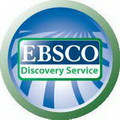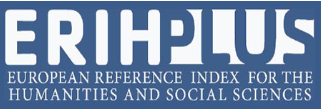DETERMINANTS OF SPORT-RECREATIONAL INTERESTS OF COLLEGE STUDENTS IN SERBIA: WHY ARE SOME OF THEM PHYSICALLY ACTIVE AND OTHERS NOT?
Originalni naučni rad
Apstrakt
Sportsko-rekreativne aktivnosti imaju pozitivan uticaj na fiziološki, psihološki i sociološki aspekt razvoja i zdravlja čoveka na svim uzrastima. U tom smislu, procena i razumevanje sportsko-rekreativnih interesovanja ostvaruje važnu ulogu u dizajniranju i osmišljavanju efikasnog nastavnog plana i programa fizičkog vaspitanja, kao i strategija javnog zdravlja na nacionalnom nivou. Cilj ovog istraživanja bio je da se ispita uticaj određenih činilaca na sportsko-rekreativna interesovanja studentske populacije. U ovoj studiji 19 nezavisnih varijabli klasifikovano je u četiri grupe. Zavisna varijabla sportsko-rekreativna interesovanja operacionalizovana je na dva aspekta: gledanje sportskih događaja i informisanost u oblasti sporta i nivo fizičke aktivnosti ispitanika. Na uzorku od 300 studenata u Srbiji pronađeni su sledeći korelati sportsko-rekreativnog interesovanja: pol i psihofizičko stanje (iz organizmičkih varijabli), tip fakulteta (iz stimulativnih varijabli), učestalost bavljenja sportom u detinjstvu (iz varijabli odgovora). Nijedna ispitana teorijska varijabla ne predstavlja prediktor sportsko-rekreativnih interesovanja studenata. Rezultati konačnog modela pokazuju da pol (ηp2 = .140) i procena psihofizičkog stanja (ηp2 = .111) predstavljaju značajne determinante, dok učestalost bavljenja ovim aktivnostima u detinjstvu ima marginalno značajan efekat (ηp2 = .059 ). U konačnom modelu, vrsta fakulteta ne predstavlja značajan činilac sportsko-rekreativnih interesovanja odraslih. Na osnovu univarijantne analize, pol utiče na gledanje sportskih događaja i informisanost u polju sporta (ηp2 = .134), gde ispitanici muškog pola pokazuju veće interesovanje od žena, dok procena psihofizičkog stanja (ηp2 = .073) i učestalost bavljenja ovim aktivnostima u detinjstvu (ηp2 = .034) utiču na učešće u intenzivnim fizičkim aktivnostima. Rezultati istraživanja nam jasno ukazuju na preporuke za buduća istraživanja, ali i za određene intervencije u okviru svake od ispitanih grupa varijabli. Može se zaključiti da je u praksi neophodno prilagoditi nastavni plan i program fizičkih aktivnosti počev od osnovne škole širom univerziteta, čineći ih dostupnijim ženskom polu i ojačavajući varijable koje se nisu pokazale kao korelati sportsko-rekreativnih interesovanja.
Reference
Booth, M. L., Owen, N., Bauman, A., Clavisi, O., & Leslie, E. (2000). Social–cognitive and perceived environment influences associated with physical activity in older Australians. Preventive Medicine, 31(1), 15-22.
Campbell, L.F., Willis, J.D. (1992). Exercise psychology, Chapter 1: Why people exercise: Motives for fitness. Champaign, IL Human Kinetics Publishers.
Cohen, J. (1988). Statistical power analysis for the behavioral sciences, second edition. New York: Lawrence Erlbaum Associates.
Crites, J. (1969): Interests, in Ebel, R: Enc. Educ. New York: Macmillan.
Ćurković, S., Bagarić, I., Straža, O., &Šuker, D. (2009). Angažiranost studenata u sportsko-rekreativnim izvannastavnim aktivnostima tjelesne i zdravstvene kulture. http://www.hrks.hr/skole/18_ljetna_skola/400-403.pdf, pristupljenodana 01.04.2018.
DeVahl, J., King, R., & Williamson, J.W. (2005). Academic Incentives for Students Can Increase Participation in and Effectiveness of a Physical Activity Program. Journal of American College Health, 53(6), 295-298.
Donnay, D. (1997). E. K. Strong`s legacy and beyond: 70 years of strong interest inventory. Career Development Quarterly, 46 (1), 2-22.
Dunlavy, A. (2008). An Exploration of University Students` Attitudes towards Physical Activity and the Importance of Physical Activity. Unpublished Master Thesis, University of Hawai`i, Honolulu, Hawai`i.
Fogelholm, M., Stallknecht, B., &VanBaak, M. (2006). ECSS position statement: Exercise and obesity. European Journal of Sport Science. 6 (1) 15-24.
Guidelines for Data Processing and Analysis of the International Physical Activity Questionnaire. (2005). https://docs.google.com/viewer?a=v&pid=sites&sr- cid=ZGVmYXVsdGRvbWFpbnx0aGVpcGFxfGd4OjE0NDgxMDk3N- DU1YWRlZTM, pristupljeno dana 5.6.2018.
Hallal, P. C., Andersen, L. B., Bull, F. C., Guthold, R., Haskell, W., Ekelund, U., & Lancet Physical Activity Series Working Group. (2012). Global physical activity levels: surveillance progress, pitfalls, and prospects. The Lancet, 380(9838), 247-257.
Havelka, N., &Lazarević, Lj. (1980). Motivacija za bavljenje sportom. Beograd: JZF- KMS.
Harackiewicz, J. M., Durik, A. M., & Barron, K. E. (2005). Multiple goals, optimal motivation, and the development of interest. In S. M. Laham, J. P. Forgas& K.
D. Williams (Eds.), Social Motivation: Conscious and Unconscious Processes (pp. 21–39). New York, NY, USA: Cambridge University Press.
Harackiewicz, J. M., &Hulleman, C. S. (2010). The Importance of Interest: The Role of Achievement Goals and Task Values in Promoting the Development of Interest. Social and Personality Psychology Compass, 4 (1), 42-52.
Hidi, S., &Harackiewicz, J. M. (2000). Motivating the academically unmotivated: A critical issue for the 21st century. Review of Educational Research, 70, 151–179.
Hidi, S., Renninger, K. A., &Krapp, A. (2004). Interest, a motivational construct that combines affective and cognitive functioning. In D. Dai & R. Sternberg (Eds.), Motivation, emotion and cognition: Integrative perspectives on intellectual functioning and development (pp. 89-115). Mahwah, NJ: Erlbaum.
International Physical Activity Questionnaire. (http://www.ipaq.ki.se/)
Krapp, A. (2002). Structural and dynamic apects of interest development: theoretical considerations from an ontogenetic perspective. Learning and Instruction, 12, 383-409.
Krapp, A., &Prenzel, M. (2011). Research on interest in science: Theories, methods, and findings. International journal of science education, 33(1), 27-50.
Kwan, M.Y., Cairney, J., Faulkner, G. E., Pullenayegum, E. E. (2012). Physical activity and other health-risk behaviors during the transition into early adulthood: A longitudinal cohort study. American Journal of Preventive medicine, 42 (1), 14-20.
Leslie, E., Owen, N., Salmon, J., Bauman, A., Sallis, JF.,& Kai Lo, S. (1999.). In- sufficiently Active Australian College Students: perceived personal, social and environmental influences. Preventive Medecine, 28, 20-27.
Lucas, R. E. (2007). Personality and the pursuit of happiness. Social and Personality Psychology Compass, 1, 168–182.
National Association for Sport and Physical Education. (2009). Appropriate instructional practice guidelines for elementary school physical education. Reston, VA: Author.
Nešić, M. (2013). Vrednosni aspekti univerzitetskog sporta. Teme, 2, 1011-1024.
Nešić, M., Srdić, V., &Fratrić, F. (2013). Stavovi motivacione determinante studentkinja kao faktori opredeljenja prema univerzitetskom sportu/Attitudes and Motivationonal Determinants of Female Students as a Factor of Choice About University Sport. Sportske nauke i zdravlje, 6 (2) ,52-62.
Nikolić, I., & Pahić, T. (2011). Sportsko-rekreacijske aktivnosti i stavovi prema njima - povezanost bavljenja tjelesnim aktivnostima s roditeljskom tjelesnom aktivnosti i usamljenošću kod studenata Učiteljskog fakulteta. Napredak, 152 (2), 289-303.
Pate, R., Pratt, M., Blair, S., Haskell, W., Macera, C., & Bouchard, C. (1995.). Physical activity and public health: a recommendation from the Centers for Disease Control and Prevention and the American College of Sports Medicine. JAMA, 273, 5.
Powell, K. E., & Pratt, M. (1996). Physical activity and health. British Medical Journal, 313, 126-127.
Ruchlin, H. S., &Lachs, M. S. (1999). Prevalence and correlates of exercise among older adults. Journal of Applied Gerontology, 18(3), 341-357.
Sallis, J.F., & Owen, N. (1999). Physical Activity and Behavioral Medicine. Thousand Oaks, CA: Sage Publications, pp.110-143.
Sallis, J. F., Prochaska, J. J., & Taylor, W. C. (2000). A review of correlates of physical activity of children and adolescents. Medicine and science in sports and exercise, 32(5), 963-975.
Schwarzer, R., & Jerusalem, M. (1995). Generalized Self-Efficacy Scale. In J. Wein-man, S. Wright, & M. Johnston, Measures in health psychology: A user’s portfolio. Causal and control beliefs (pp. 35-37). Windsor, UK: NFER-NELSON.
Trost, G., Owen, N., Bauman, E., Sallis, F., & Brown W. (2002). Correlates of adults’ participation in physical activity: review and update. Medicine and Science in Sports and Exercise, 34, 1996-2001.
Vuillemin, A., Boini, S., Bertrais, S., &Tessier, S. (2005). Leisure time physical activity- ty and health-related quality of life. Preventive Medicine, 41, 562-569.
WHO (World Health Organization). (2002). The World Health Report 2002 - Reducing risks, promoting healthy life. Geneva: World Health Organization. http://www. who.int/whr/2002/en, pristupljeno 26.05.2015.






